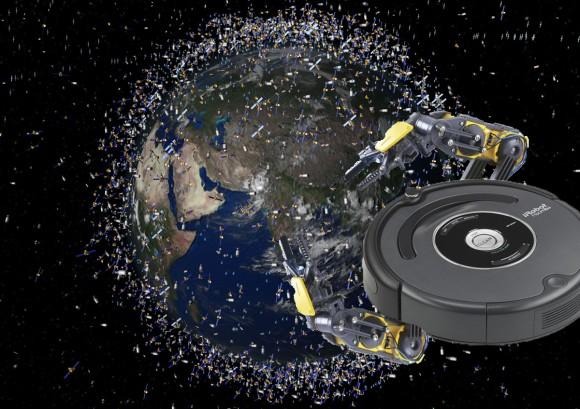Clean up space or suffer satellite destruction warns ESA
Space debris that could potentially disrupt future satellites or even space travel must be actively cleared, with nets, harpoons, and other collection methods all under consideration, the European Space Agency concluded today. Although expensive, the tidy-up of space is essential if we're not to face even bigger bills for replacing damaged satellites, the ESA warned after the 6th European Conference on Space Debris held this week; in fact, the agency argues, the issue is akin to the problems recognized around climate change two decades ago.
The problem is twofold, the ESA said. First, new missions into space must be sustainable, with designs that take into account safe disposal of spent rocket stages and other components that might traditionally have been left to orbit the Earth.
Second, though, is the work needed to actively clear what debris has already been abandoned. The ESA has called for pilot missions to clean the area of localized space around the planet, so as to mitigate the potential for satellites to be knocked out of the sky.
Space Debris overview:
[vms 9ff0e5d1176244fdfb65]
"While measures against further debris creation and actively deorbiting defunct satellites are technically demanding and potentially costly," ESAT Space Debris Office chief Heiner Klinkrad said in a statement, "there is no alternative to protect space as a valuable resource for our critical satellite infrastructure."
Replacing 1,000 active satellites, for instance, would carry a cost of around €100bn ($131bn), the group estimates. That ignores the knock-on effect of navigation, broadcast, weather, telecoms, and other satellite infrastructure to business and operations on the ground.

Potential methods to actively gather up debris include the space equivalent of nets and harpoons, the AP reports, as well as more outlandish proposals that include deflecting rogue objects with laser light, and even repositioning them with robots, such as a 2011 suggestion by an Italian aerospace engineer. His idea was to actively chase down objects, seize them, and then glue rockets to them that would blast them back down to Earth. Last year, Swiss scientists revealed plans for a hunter-gatherer satellite that would cruise through its orbit like a shark, swallowing up abandoned materials.
However it's done, the problem has already had an impact on space projects. A Russian satellite collided with debris earlier this year, believed to have been left behind by a Chinese mission, and became the fourth satellite known to be destroyed after a crash. Last year, meanwhile, NASA was almost forced to reposition the International Space Station, after fears debris could hit it.
